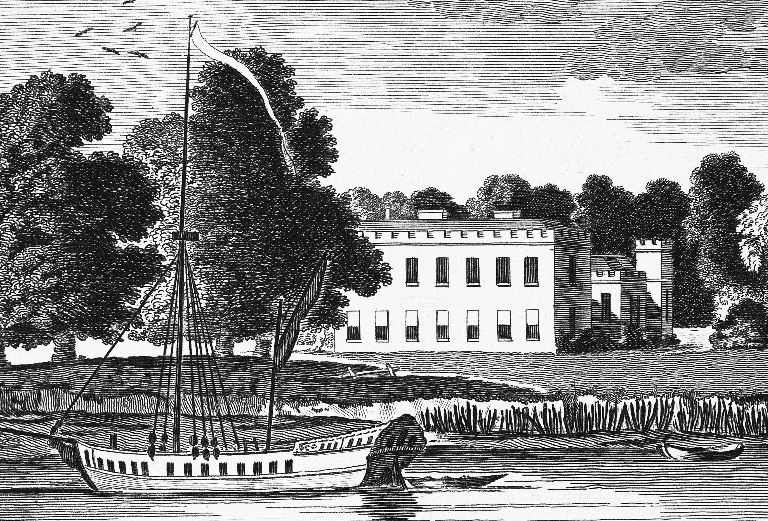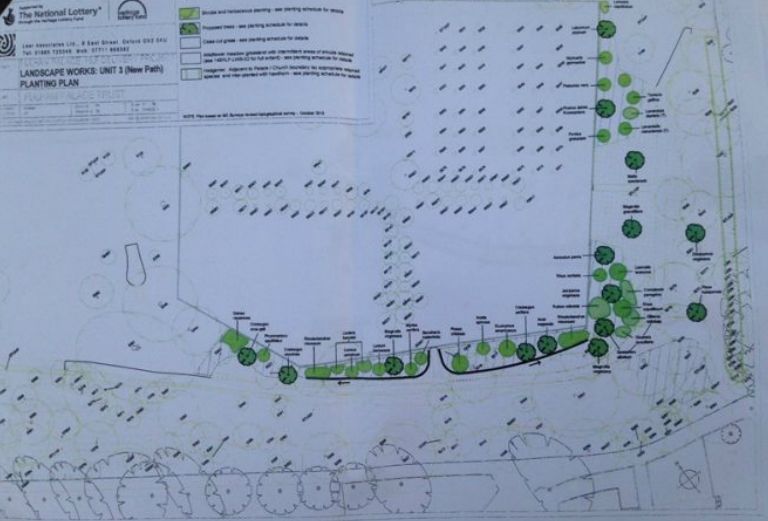
by Lucy Hart, head gardener
As part of our Phase 3 restoration project, we’re improving our views around the grounds, opening up areas for replanting and building new permanent paths. In order to achieve these improvements we need to remove some trees. These are mainly self-sown sycamores that have grown up on the perimeter of the site. The removal of trees is a not a decision that Fulham Palace Trust has taken lightly and we have taken on board the views of the public and stakeholders.
Reasons
The main reasons for the project within the gardens are to:
- Open up views between Fulham Palace, Bishop’s Park and the Thames, establishing a greater sense of interconnectivity and discovery. This should also reduce anti-social behaviour.
Allow space for a small number of new tree and shrub plantings, which will also act to increase biodiversity and encourage more wildlife. - Re-introduce historic plants that were first grown in the UK here at Fulham Palace, by Bishop Compton (1675 to 1713).
- Increase the range of planting outside the walled garden, contributing to the long-term improvements to the whole garden.
- Enhance the path network, at the main entrance and south of the walled garden.
- Regain control of invasive species such as sycamores (Acer pseudoplatanus) that have been allowed to self-seed themselves. Most of the trees being removed are sycamores which are invasive and of no historic relevance to Fulham Palace. Their current existence is crowding out and deforming other trees.
Background and Consultation on tree removals
Tree density in the Fulham Palace gardens has increased from the late 19th century and dramatically from the 1970s. The site has over 646 trees over a 75mm girth diameter within its 13 acres. This includes 94 sycamores in 13 acres of land (compared with 7 sycamores in 250 acres of land at Kew Gardens). This is too many trees in too small area, given that other large sections of the Palace, e.g. the main lawn, have no trees. The quality of many of the trees planned for removal has been compromised by long term lack of arboriculture management leading in many cases to poor canopy development.
Other studies have also shown that better air flow protected trees from diseases such as ‘Sudden Oak Death’ or phytopthora. Thinning of excess vegetation and improvements in air flow is now an important strategy in many historic gardens in the UK.
Following consultation feedback with local groups and stakeholders, we have reduced the number of trees for removal to 63 trees. In the most part these are spontaneously arising self- seeded sycamores which reflect reduced levels of care and horticultural management during the 20th century and in particular, over the past 40 years. We will be keeping the largest trees on site including the largest sycamores, unless our 2016 tree survey recommends to fell the trees for health and safety reasons.
Ongoing Restoration
The restoration project will reinstate the south path that goes around the outside of the walled garden up to the church yard gate. Along this route there are quite a few trees and by removing these will allow the path to be re-laid and provide all year round access for our visitors.
We will open up the view to the River Thames, which historically provided transport to other episcopal and royal palaces. Through removing some trees to create this view, we will also help create a greater sense of space and interconnectivity between the Palace, Bishop’s Park and the River Thames.
Historical Significance and New Trees
The tree removals will provide space to plant new trees and shrubs which reflect the historic importance of the site as a botanical garden. We will create historic plant beds with emphasis placed on the collections amassed by Bishop Compton during his tenure at the palace from 1675 to 1713. Bishop Compton was passionate about plant collecting and introduced the first Magnolia to Europe, growing it here in Fulham Palace for the first time. We have a long term strategy to replace sycamores with historically appropriate tree and shrub species.
In the short term we will be planting around 15 trees and many more shrubs and plants. In addition, we have planted 47 apples trees in the walled garden in 2016 and will be planting another 68 in 2018.
Biodiversity
The existing habitat with dense sycamore and matted ivy has left us with a rather sterile environment. By taking some trees out and reducing the ivy this will allow better growth from other existing trees, space to plant more species, creating a more diverse habitat and encouraging birds and other wildlife to inhabit the Palace grounds. Our recent bat survey confirms we have no roosting bats however we will be installing bat boxes in the trees as well as bird boxes to enhance populations.
Fulham Palace has an ongoing commitment to restore and maintain the Palace and gardens for future generations.
